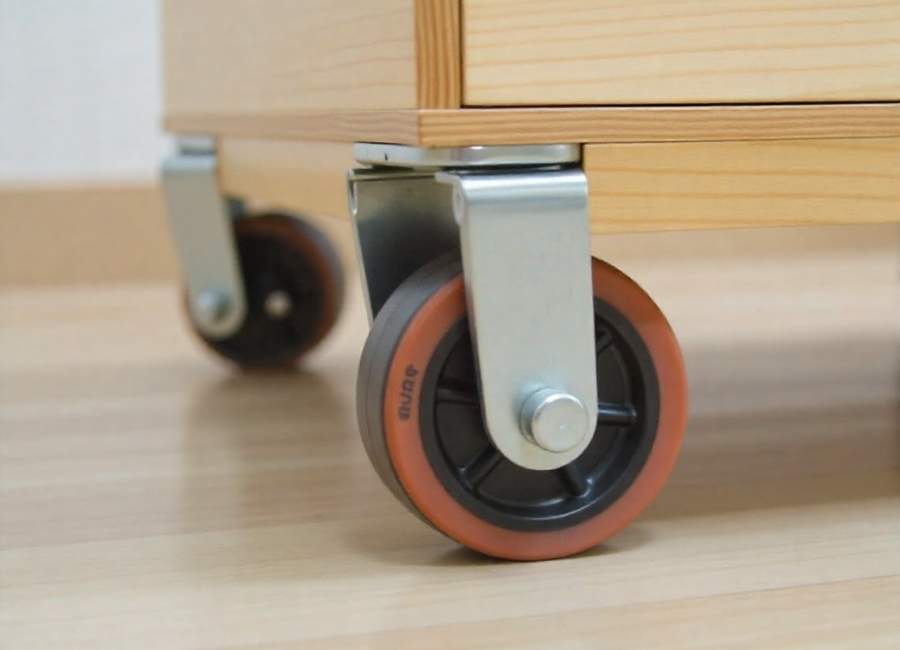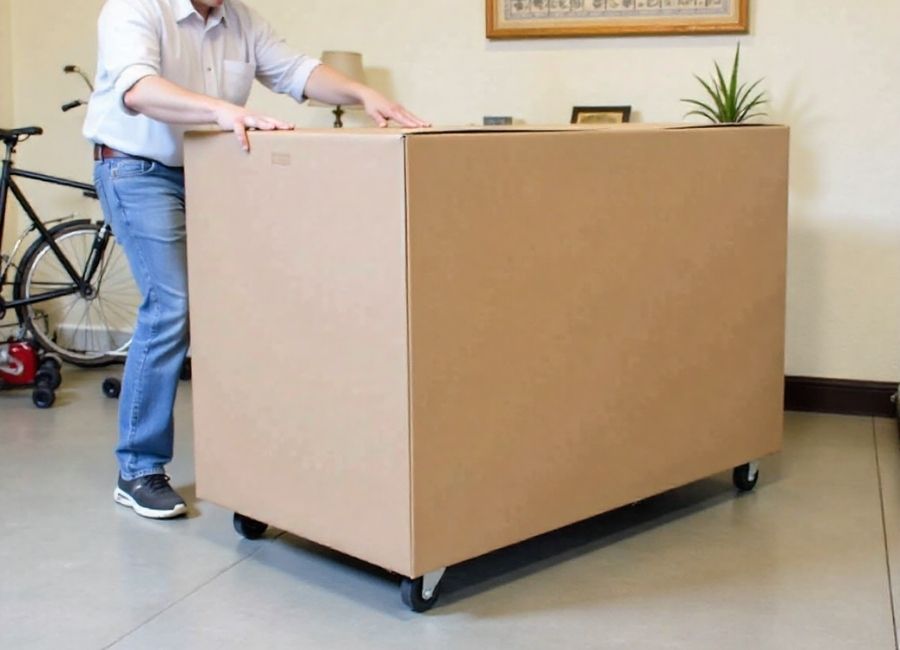You’re moving a couch across the garage, and suddenly the furniture dolly sounds like a freight train. The squeaking, rattling, and banging are enough to wake the neighbors—and leave you wondering if something’s gone wrong.
Furniture dollies aren’t supposed to be this noisy. When this occurs, it’s usually a sign of worn components, poor maintenance, or an improper setup for your flooring. The good news? Most of these problems are fixable with a few simple adjustments.
Understanding what causes all that racket helps you reduce the noise, protect your floors, and extend the life of your dolly. Whether you’re dealing with squeaky wheels, loose bolts, or vibrations from rough surfaces, there are practical solutions that make moving heavy furniture a quieter, smoother process.
Let’s break down the main culprits behind furniture dolly noise and what you can do about them.
What Causes Furniture Dollies to Be So Loud?

Furniture dolly noise isn’t random. It’s the result of several factors working together—materials, surfaces, weight, and maintenance all play a role. Here’s what’s likely causing the problem.
Hard Wheel Materials
Metal or rugged plastic wheels are standard on budget dollies, but they’re also the noisiest. These materials don’t absorb shock, so every bump and crack in the floor translates into sound. Rubber or polyurethane wheels, on the other hand, cushion the impact and dampen vibrations, making them much quieter.
If your dolly came with rugged wheels, swapping them out for softer alternatives can make a noticeable difference.
Uneven or Rough Surfaces
Rough flooring—such as concrete, gravel, or even old hardwood—creates vibrations as the wheels roll over it. These vibrations travel through the dolly and amplify the noise. Even minor imperfections in the floor can cause rattling and harsh sounds, especially when you’re moving heavier items.
Smooth, level surfaces significantly reduce this problem. If you frequently work on rough terrain, consider wheels designed to handle uneven ground without generating excessive noise.
Heavy Loads Increase Friction
The heavier the load, the louder the dolly. More weight means more friction between the wheels and the floor, which increases sound. This is especially true if the wheels are already worn or made from hard materials.
Distributing weight evenly and securing the load can reduce some of this friction and minimize noise.
Loose Parts and Hardware
Bolts, nuts, and other fasteners can loosen over time, especially with frequent use. When parts aren’t tightly secured, they rattle with every movement, adding to the overall noise. This is one of the easiest problems to fix, but it’s also one of the most overlooked.
A quick inspection and tightening session can eliminate a surprising amount of rattling.
Lack of Regular Maintenance
Without proper lubrication, friction builds up in the wheel bearings and axles. This not only makes the dolly harder to push but also causes squeaking and grinding sounds. Over time, this wear accelerates, leading to louder operation and potential damage to the dolly.
Regular maintenance keeps everything running smoothly and quietly.
How to Reduce Furniture Dolly Noise

Once you identify the source of the noise, fixing it becomes straightforward. Here are the most effective ways to quiet down a loud furniture dolly.
Lubricate Moving Parts
Apply grease or a suitable lubricant to the wheel bearings and axles. This reduces friction and eliminates squeaking. It’s a simple step that makes a big difference, especially if your dolly hasn’t been serviced recently.
Make this part of your routine maintenance—lubricating every few months or after heavy use keeps the dolly operating quietly.
Inspect and Replace Worn Wheels
Check the wheels for cracks, flat spots, or excessive wear. Damaged wheels don’t roll smoothly and generate more noise. If you spot any issues, replace the wheels before the problem gets worse.
When replacing wheels, choose softer materials like rubber or polyurethane. These absorb shock more effectively and significantly reduce noise.
Tighten All Bolts and Fasteners
Go through the entire dolly and tighten every bolt, nut, and fastener. Loose hardware is a common source of rattling, and it can be easily fixed in just a few minutes.
If you notice any parts that keep coming loose, consider using lock washers or thread-locking compound to keep them secure.
Remove Debris Around the Wheels
Dirt, gravel, and other debris can become lodged around the wheels, increasing resistance and producing loud scraping sounds. Clean the wheels and the surrounding areas regularly to prevent buildup.
This is especially important if you’re using the dolly outdoors or in dusty environments.
Use Softer Wheels for Quieter Operation
If you’re still experiencing noise after maintenance, it’s time to consider upgrading the wheels. Rubber wheels are the quietest option, providing excellent shock absorption. Polyurethane wheels offer a good balance between durability and noise reduction.
Switching to softer wheels is one of the most effective ways to reduce furniture dolly noise, especially on hard surfaces like concrete or tile.
Secure Your Load
A shifting load creates vibrations and noise as the weight moves during transport. Use straps, bungee cords, or padding to keep items stable and prevent unnecessary rattling.
A well-secured load also makes the dolly easier to control and safer to use.
Maintenance Checklist for a Quieter Dolly

Staying on top of maintenance prevents most noise problems before they start. Here’s a simple checklist to keep your furniture dolly running smoothly and quietly:
- Regularly grease wheel bearings and axles: Do this every few months or after heavy use.
- Inspect wheels for damage: Look for cracks, flat spots, or excessive wear, and replace wheels as needed.
- Tighten all bolts and fasteners: Check these before each use, especially if you’re moving heavy loads.
- Remove debris from around the wheels: Clean the dolly after outdoor use or in dusty conditions.
- Choose softer wheel materials: Opt for rubber or polyurethane wheels when possible.
- Use stable, even flooring surfaces: Minimize vibrations by working on smooth, level ground.
- Secure heavy loads: Prevent shifting and rattling by securing items firmly in place.
Following this checklist takes only a few minutes, but can extend the life of your dolly and keep it operating quietly.
Special Considerations for Winter Use
Cold weather presents unique challenges for furniture dollies. Freezing temperatures can harden wheels, making them noisier and less effective at absorbing shock. Ice, snow, and grit on the ground increase the risk of floor damage and amplify sound.
Switching to rubber wheels during the winter months helps. Rubber remains more flexible in cold temperatures and provides better traction on slick surfaces. It also reduces noise compared to hard plastic or metal wheels.
If you’re moving holiday decorations or rearranging furniture for seasonal gatherings, a quieter dolly is especially important. The last thing you want is to disturb family or neighbors while setting up for the holidays.
Planning and adjusting your dolly setup for winter conditions ensures smoother, quieter moves, protecting both your floors and your sanity.
Keep Your Furniture Dolly Quiet and Efficient
A noisy furniture dolly isn’t just annoying—it’s often a sign that something needs attention. Rugged wheels, rough surfaces, heavy loads, and lack of maintenance all contribute to the racket. The good news is that most of these issues are easily resolved with a few simple steps.
Start by lubricating moving parts and tightening loose hardware. Inspect the wheels for damage and replace them with softer materials if needed. Secure your loads, clean debris regularly, and pay extra attention to maintenance during the winter months.
These small changes add up to a quieter, smoother-moving experience and a dolly that lasts longer. Whether you’re a DIY enthusiast or a professional mover, a well-maintained furniture dolly makes every job easier—and a whole lot quieter.











